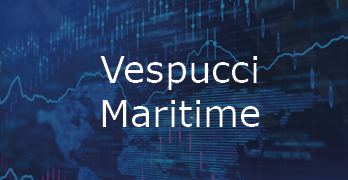FBX Index February 2023: The beginnings of a shake-up

All elements in the container shipping markets point to a challenging period for container carriers in 2023. Not only are the fundamental elements pointing to a cyclical downturn, but the competitive pressure between carriers is also poised for a temporary increase.
On the fundamental elements, demand continues to be weak whilst capacity is ramping up.
Volumes on the major deep-sea trades are mostly either at or below pre-pandemic levels following the collapse which began already in September 2022. This is driven by importers, especially in Europe and North America, undergoing an inventory correction. This movement is likely to continue through the full period of Q1 2023 as there is quite a bit of lag time in getting inventories reduced. A very good example of this can be seen in the US. Container volumes went into a steep decline already in September. Loaded volumes in the Far East bound for North America declined more than -20% year-on-year, which is a trend that continued into the latest data covering data in November.
However, the newest official data for inventories in the US showed that retailers and manufacturers merely managed to maintain their inventory sizes level whilst the wholesalers’ inventories continued to increase. This is a clear indication that the inventory correction cycle will take some time before being completed. And, during that period, demand will remain subdued.
It should be noted that the demand data is measured at port of loading. Hence this drop would only manifest itself with a time lag of one to two months in terms of the importers in North America taking delivery of the goods. However, the newest official data for inventories in the US showed that retailers and manufacturers merely managed to maintain their inventory sizes level whilst the wholesalers’ inventories continued to increase.
This is a clear indication that the inventory correction cycle will take some time before being completed. And, during that period, demand will remain subdued.
2023 is a year where we will see the injection of some 8% additional fleet capacity globally. It might be expected that the new environmental regulations would lead to some slow steaming which can absorb part of this added capacity. However, this effect might possibly not manifest itself fully until during 2024. And even in the absence of such an effect, carriers are already choosing to slow steam to absorb some of their capacity. Several vessels have in recent months been diverted to take the long route from Europe to Asia (south around Africa) instead of through the Suez Canal. This absorbs some excess capacity whilst saving the carriers money on the Suez Canal transit fee. But this is of course a stop-gap measure used when there are de-facto overcapacity problems.
Normally spot rates show a significant, but temporary, increase in the lead-up to Chinese New Year. In 2023 the market only saw about 25% of this usual seasonal effect play out, which was an extremely weak performance.
The magnitude of the overcapacity issue can also be seen directly in the development of spot rates. The major deep-sea trades saw the sharp declines of 2022 abate and rates were mainly flat in January 2023 with a slight upwards trend. But this is also a sign of a weak market. Normally spot rates show a significant, but temporary, increase in the lead-up to Chinese New Year. In 2023 the market only saw about 25% of this usual seasonal effect play out, which was an extremely weak performance.
The fundamentals are clearly working against carriers presently. On top of this comes an added competitive pressure. The announcement that Maersk and MSC will abandon the 2M alliance will cause not only those two carriers, but all other carriers, to re-consider their own collaborative networks. In all likelihood this will trigger a cascading effect where all three alliances will be reshuffled and new collaborative agreements will begin to take hold in 2024. But this means 2023 will have an added focus on competitive positioning relative between the carriers. In other words, this means increased competitive pressure – and as a result a weaker commercial environment for the carriers - to the benefit of the customers.
About Lars Jensen, CEO, Vespucci Maritime
Lars is a leading expert and thought leader in analyzing global container shipping markets. Lars has 19 years’ experience hereof the last nine within multiple companies he has founded, with the main focus as CEO of Vespucci Maritime.
Receive monthly container market reports direct to your inbox.